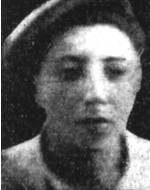Natanel, son of Rivka and Meir (Bila), was born in 1926 in Hungary, in the town of Tet, where he lived in an elementary and high school in his hometown, where there was a small Jewish community. The first countries in which modern political anti-Semitism emerged and became a protectorate of Germany adopted racial laws, and in 1938 and 1941 Hungarian laws resembling the Nuremberg Laws were enacted and the Jews in its territory suffered harsh restrictions and decrees. Jews without Hungarian citizenship to the city of the Kaminitz-Podolski fortress in southwest Ukraine, where he was murdered In March 1944, tens of thousands of Jews were forcibly conscripted into special Hungarian army units, sent to the front, and from there they did not return.In March 1944, the Germans occupied Hungary after the alliance was broken. More than half a million Hungarian Jews were sent to extermination camps, where he and his brother, sister, brother, and sister were killed, and he survived the camp and other camps at the camp of Mauthausen, where he was liberated by the American army. . When he returned to his town and learned that his entire family had been destroyed, Nathaniel set out on the “escape route” to Italy. The many hardships and shared fate of the survivors made him a national Jew and he decided to immigrate to Eretz Israel. The ship that landed in Palestine at the end of 1946 was seized and he was led with all the immigrants to a detention camp in Cyprus, where he spent over six months. At the end of the summer of 1947, Nathaniel arrived in Israel and settled in Rishon Letzion, where he began to work as a typewriter repairman, slowly settling around and occasionally visiting a house of acquaintances from his childhood who lived in Jerusalem. He was a member of the 1st Battalion of the 11th Brigade, the Yiftach Brigade, and fought as a soldier in Company B in the battles of the battalion, mainly in the north. The armies of Syria and Lebanon operated in the eastern Upper Galilee in the framework of Operation Yiftach and Mataata, during which they conquered Safed and Tiberias. In the course of which they blew up the Litani bridge and the ammunition depots of the Syrian army.In June 1948, towards the first truce in the war, the Yiftah Brigade was reduced to the central region , Participated in Operation “Yoram” in an attempt to capture Latrun, and with the resumption of fighting after the first truce, the brigade participated in the operation “Danny.” On July 8, 1948, towards the end of the truce, , During which they conquered hostile villages and achieved many successes. On the night of 17/18 July 1948, towards the beginning of the second truce, the battalion’s soldiers occupied the Shilat outpost in the eastern part of the Korikor ridge (now near the settlement of Shilat in the Modiin region), in order to threaten the wing of the legion in Latrun. On the morning of the 11th of Tammuz 5708 (July 18, 1948), it became clear that the Legion force was holding the western part of the ridge that dominated the road to Beit Nabala. The enemy was aided by armored vehicles and attacked the force at the outpost from two directions, and Yiftah fighters were forced to retreat. In the harsh retreat, in an open area under crossfire, more than forty fighters fell, and Nathaniel among them. Nathaniel was twenty-two years old when he fell. His body remained in Jordan and he was considered missingMore than a year, until searches were made in the area. On the 11th of Adar 5702 (28.2.1950) he was laid to rest in the military cemetery on Mount Herzl in Jerusalem. This hero is a “last scion”. The survivors of the Holocaust are survivors of the Holocaust who survived the last remnant of their nuclear family (parents, brothers, sisters, sons and daughters) who experienced the Holocaust in the ghettos and / or concentration camps and / or in hiding and hiding in territories occupied by the Nazis and / Or in combat alongside members of the underground movements or partisans in the Nazi-occupied territories who immigrated to Israel during or after World War II, wore uniforms and fell in the Israeli army.
